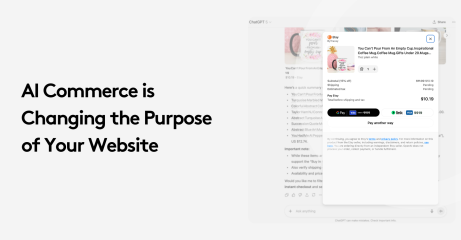11. Consider your options before using Magento as an eCommerce platform
We won’t deny that Magento is a stellar eCommerce solution, but will argue that it’s not the best commerce solution when you factor in things like:
- Ongoing costs
- Ongoing maintenance
- The mountain on unsolved customer support tickets
- The issue of continual updates and migrations
- Magento’s lack of supporting technology
- Magento’s open source nature
- The lack of native headless content management features
From our perspective, we feel that brands should at least consider their options before coughing up at least $22,000 for a versioned product that doesn’t provide solutions for today’s omnichannel world.
But hey, what do we know — we’re just Core dna, a humble, all-in-one commerce and digital experience platform with all the tools an enterprise will ever need.
This is our perspective in 2025 on the importance of choosing your platform wisely
12. The Platform Dilemma
Magento has changed a lot from its early days. However, Magento site owners still face several problems like website crashes, extension conflict, compatibility issues, and more. Platform issues hamper business and create unnecessary chaos.
Are Magento's glory days over? Here's a look at the issues with the platform and why new technology like Core dna is changing the way you previously thought about eCommerce platforms.
Headless is Changing the Game - Big changes are happening in the world of eCommerce platforms. Headless commerce is agile, fast, and flexible.
The CMS world is being turned upside down with the introduction of headless technology. The paradigm shift means content editors can construct content in new ways, store it, and distribute it whenever and wherever they choose.
The eCommerce sphere is especially profiting from the shift. New technology like Core dna is changing the way customers build and manage eCommerce platforms.
Magento Represents a Legacy Technology - A legacy system is an outdated computer system. The platform can't deploy quickly or change rapidly without utilizing extensive back-end developers.
For brands or businesses with teams of back-end developers at their fingertips, Magento was a great fit.
However, for customers who don't have the technical expertise and are not interested in maintaining technology, going headless will likely become how they deploy their next eCommerce platform.
Developers Can Do Anything - Pro-Magento users argue the ability to change anything is a major perk of the platform - which is excellent if you have an in-house development team.
While developers are finding ways to customize and hack Magento to enable it to work in this headless future, at the end of the day, update costs, refactoring, patching, ongoing innovation, and security upgrades are always going to outweigh the fixed fees for a hosted cloud platform. On a hosted cloud platform, all these activities are done for you.
The Need For Speed - Once again, all-mighty Google updates have made speed and performance all the more significant.
Speed doesn't simply mean quick page load time or caching to deliver content quicker. Instead, speed should consider giving rapid results from a search, search filtering, faceted searches, and casual browsing.
Is Open Source a Real Advantage? - This has been a great debate for over two decades. So many people have the misconception that open-source is free, but that's not always the case.
Does managing your own technology make sense? Does it deliver any competitive advantage? Does it allow your business to be agile and move quickly? These are the questions you should be considering.
Is Re-platforming Dead? - Who needs plugins, bug fixes, feature requests, upgrades, security patches, hosting, performance tuning, and caching when a platform can provide it for you from the get-go?
Platforms like Core dna have made re-platforming a thing of the past. The need is simply diminishing due to better, more advanced technology.
So, do we gather here to say our goodbyes to re-platforming? We think so.

















